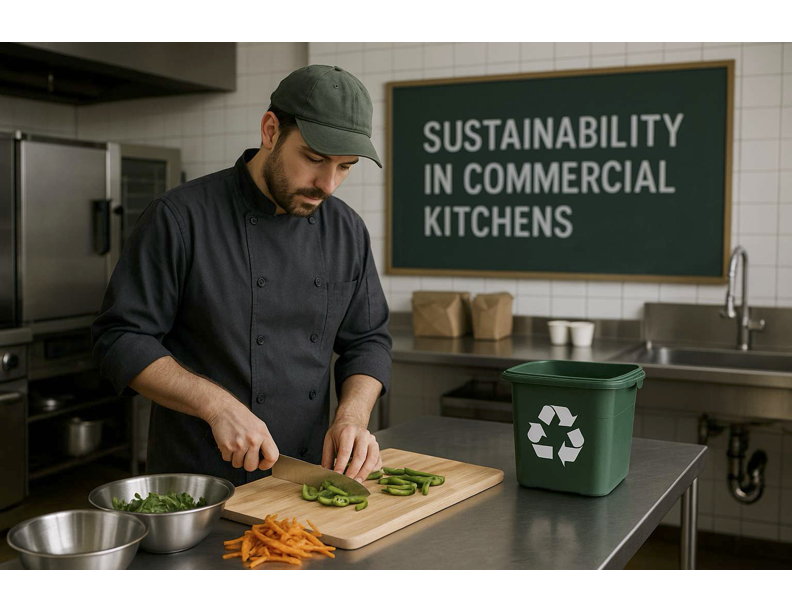Sustainability isn’t just a buzzword — it’s a business imperative. And for commercial kitchens, it’s one of the biggest opportunities to make a meaningful impact while also improving the bottom line.
Restaurants, cafeterias, and other foodservice operations are notoriously resource-intensive. From energy-hungry equipment to food waste and plastic-heavy packaging, kitchens can be major sources of environmental strain. But with the right strategy, a commercial kitchen can dramatically reduce its footprint — and often save money in the process.
Here’s what real sustainability in a commercial kitchen looks like.
1. Waste Less Food
Food waste is the low-hanging fruit of sustainability. It’s expensive, environmentally damaging, and completely preventable.
Smart moves:
-
Track waste: Use food waste logs to identify what's getting tossed — prep scraps, spoilage, plate waste — and why.
-
Rethink portions: If half the plate comes back uneaten, your portions are too big.
-
Repurpose ingredients: Broccoli stems make great soup. Day-old bread? Croutons or breadcrumbs.
-
First in, first out (FIFO): A basic but often ignored inventory rule that prevents spoilage.
Reducing food waste isn’t just good ethics — it’s good business. Less waste means lower food costs.
2. Use Energy-Efficient Equipment
Commercial kitchen equipment can be a serious energy hog. But ENERGY STAR–rated appliances use 10-70% less energy and water compared to standard models.
Look for upgrades in:
-
Refrigeration units
-
Dishwashers
-
Fryers
-
Ovens and ranges
-
Ventilation systems
And don’t ignore maintenance. A dirty condenser coil or a worn-out gasket can spike your energy bills without you noticing.
3. Cut Water Use
Dishwashing, produce rinsing, handwashing — it all adds up. Commercial kitchens can use thousands of gallons of water every day.
Water-saving tactics:
-
Install low-flow spray valves and aerators.
-
Only run full dish loads.
-
Train staff on proper rinsing techniques.
-
Fix leaks immediately.
Saving water lowers utility bills and reduces strain on local resources.
4. Switch to Sustainable Packaging
Takeout and delivery are here to stay, but styrofoam and plastic aren’t. More customers are demanding eco-friendly packaging, and in many places, single-use plastics are being banned.
Best bets:
-
Compostable containers
-
Recyclable paper-based options
-
Reusable container programs for local customers
And ditch the automatic utensils and napkins unless requested — they often go unused.
5. Source Smarter
Sustainability isn’t just about what happens in the kitchen — it starts with what you bring in.
Consider:
-
Local and seasonal ingredients (less transport, fresher food)
-
Certified sustainable seafood
-
Ethical meat and dairy sourcing
-
Partnerships with local farms or co-ops
Buying better doesn’t always mean spending more — and it can set your kitchen apart in a crowded market.
6. Train Your Team
None of this works if your staff isn’t on board. Sustainability needs to be part of your kitchen culture, not just a side project.
How to get buy-in:
-
Include sustainability goals in staff training
-
Reward ideas that reduce waste or save resources
-
Share progress and results so everyone sees the impact
Make it a team effort, and you'll build momentum that lasts.
Final Word: Sustainability Pays Off
Sustainable kitchens aren’t just better for the planet — they’re leaner, more efficient, and often more profitable. Small steps add up. And in a world where both diners and regulators are paying closer attention, going green isn’t optional — it’s smart business.
If you run or manage a commercial kitchen, this is your chance to lead the change. Sustainability isn’t a burden. It’s your competitive edge.

